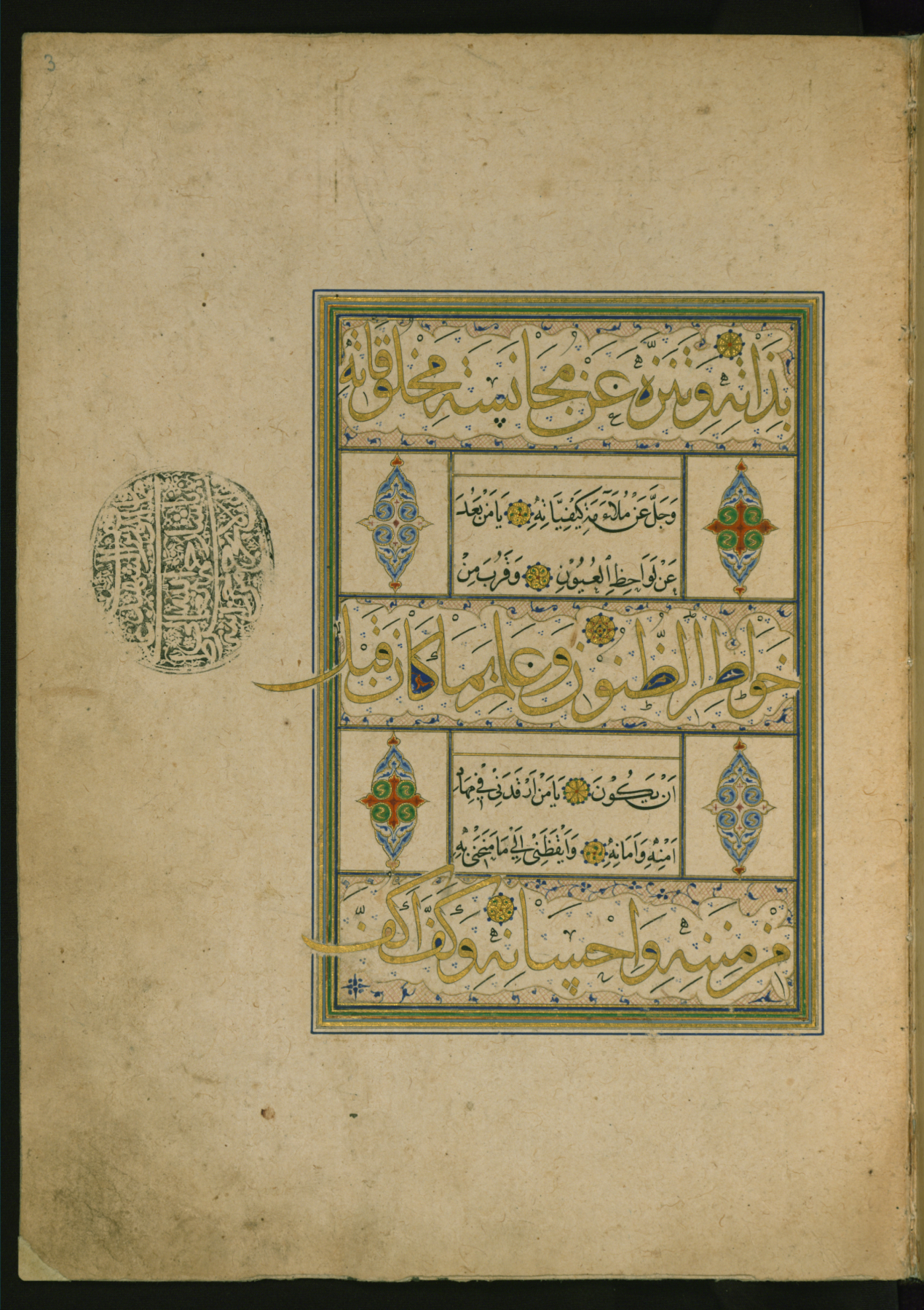Illuminated Text Page with Seal
This text page from Walters manuscript W.579 is defined by the use of alternating black Naskh and gold Thuluth. The Naskh panels are flanked by illuminated medallions with a gold-tooled outline. The gold Thuluth lines are set apart by outlines resembling clouds. Illuminated rosettes serve as verse markers. The stamp in the left margin is the personal seal of the Vizier 'Ali Pasha, who gave the manuscript to an educational charity in 1130 AH/AD 1717.
Provenance
Provenance (from the French provenir, 'to come from/forth') is the chronology of the ownership, custody, or location of a historical object. Learn more about provenance at the Walters.
Vizier al-Shahid 'Ali Pasha, ca. 1130 AH/AD 1717 (?) [mode of acquisition unknown] [waqf-seal impression of the Vizier dated 1130 AH/AD 1717 with the original shelf mark 1414 on fols. 2a, 2b, and 3a]; Henry Walters, Baltimore [date and mode of acquisition unknown]; Walters Art Museum, 1931, by bequest.
Exhibitions
| 2007 | Speaking the Word of God: Illuminated Korans from the Walters Art Museum. The Walters Art Museum, Baltimore. |
| 1988 | Masterpieces of Ornament. The Walters Art Gallery, Baltimore. |
Geographies
Iran, Gorgan (Astarabad) (Place of Origin)
Measurements
H: 9 1/4 x W: 6 1/2 in. (23.5 x 16.5 cm)
Credit Line
Acquired by Henry Walters
Location in Museum
Not on view
Accession Number
In libraries, galleries, museums, and archives, an accession number is a unique identifier assigned to each object in the collection.
In libraries, galleries, museums, and archives, an accession number is a unique identifier assigned to each object in the collection.
W.579.3A



